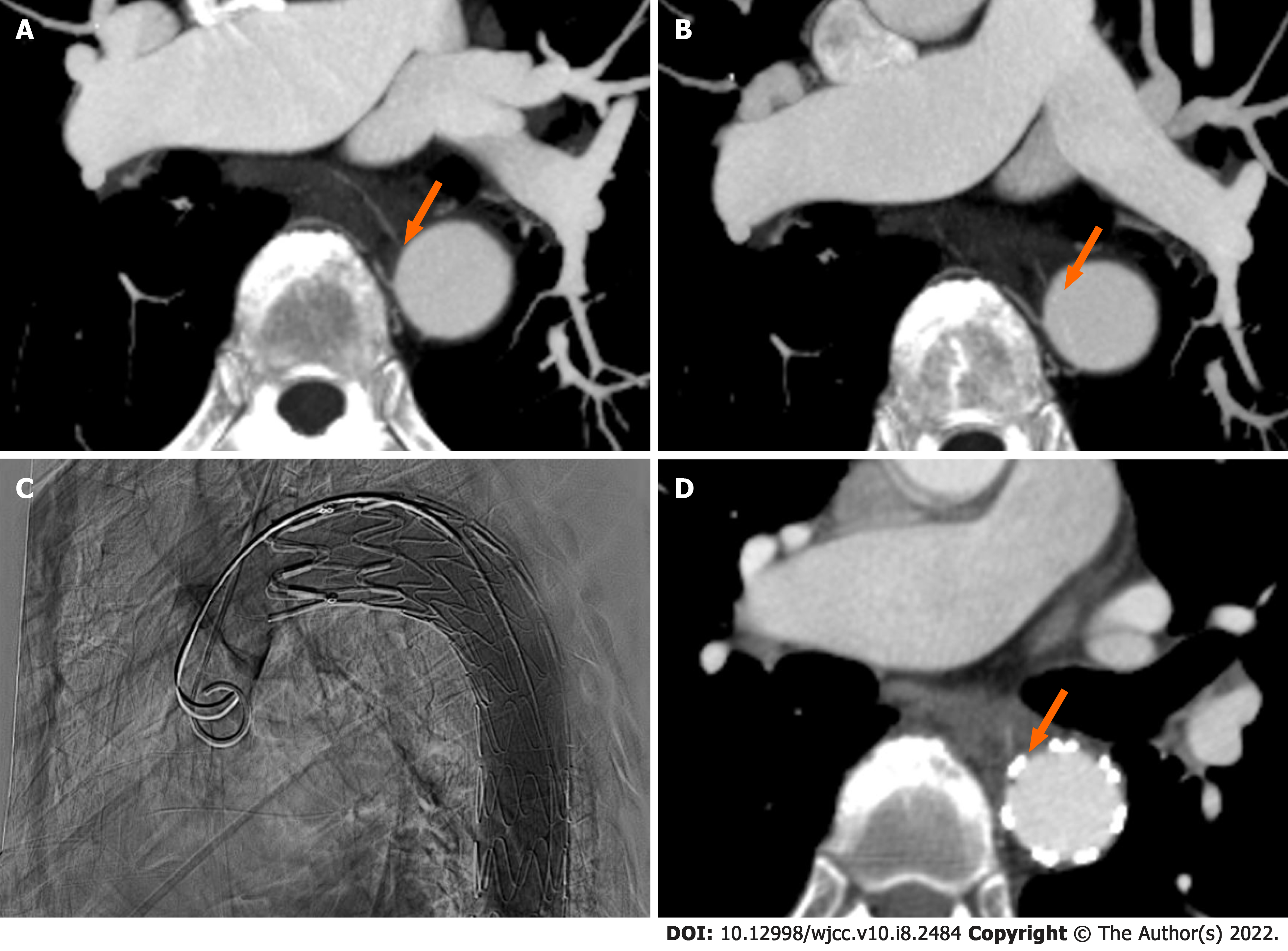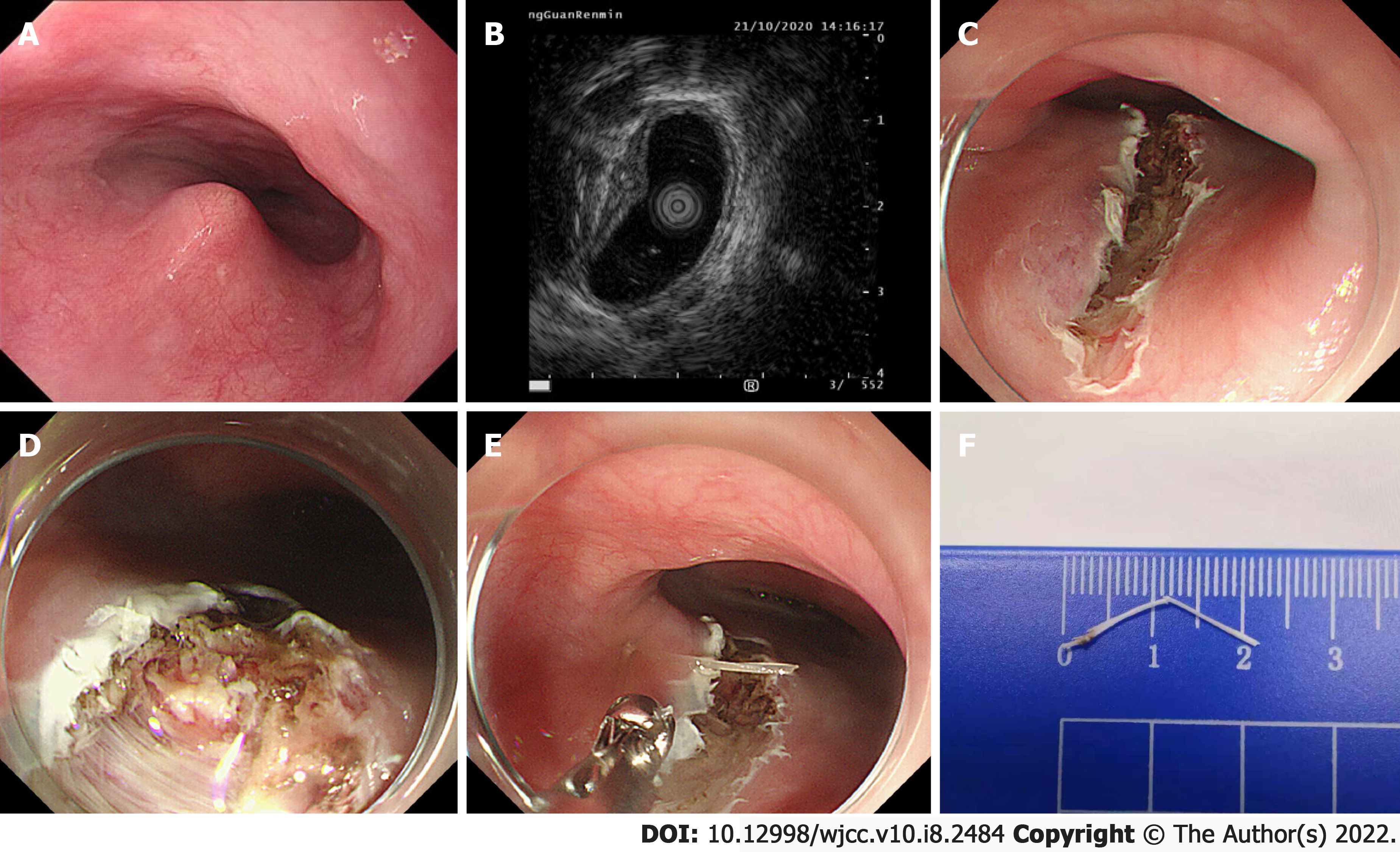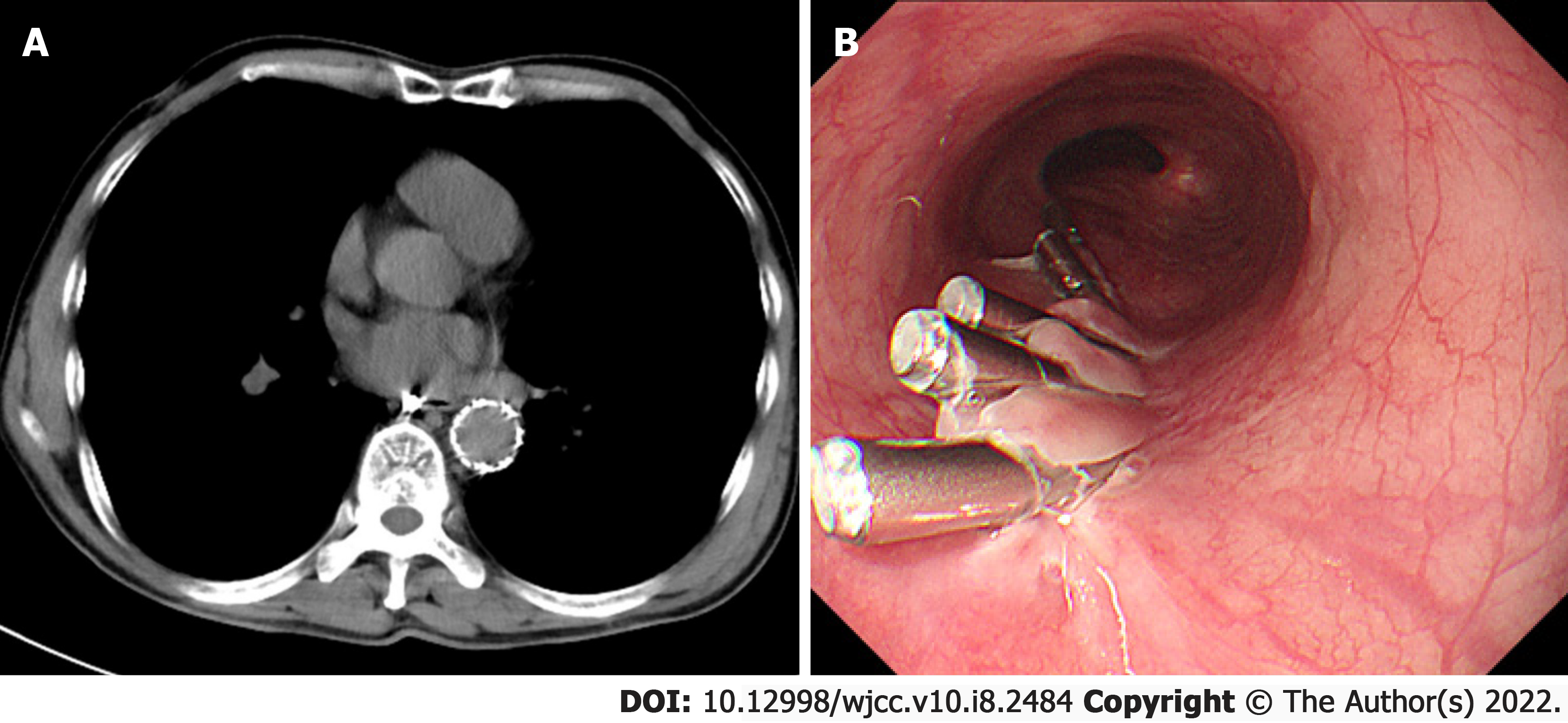Copyright
©The Author(s) 2022.
World J Clin Cases. Mar 16, 2022; 10(8): 2484-2490
Published online Mar 16, 2022. doi: 10.12998/wjcc.v10.i8.2484
Published online Mar 16, 2022. doi: 10.12998/wjcc.v10.i8.2484
Figure 1 Computed tomography images and thoracic endovascular aortic repair images.
A: Emergency thoracic computed tomography (CT) angiography revealed a fishbone in the esophagus involving the wall of the thoracic aorta; B: Enhanced CT angiography revealed that the fishbone had directly penetrated the thoracic aorta after esophagoscopic examination; C: On October 18, 2020, we successfully performed thoracic endovascular aortic repair (TEVAR); D: CT angiography after TEVAR showed that the fishbone was pressed against the edge of the blood vessel.
Figure 2 Images of endoscopy operation.
A: Endoscopic examination was performed on October 21, 2020, and a bulge was identified; B: Endoscopic ultrasonography showed a strong echo light cluster protruding beyond the muscularis propria under the bulge; C: The nodule was incised with a dual knife and IT knife to the deep part of the esophageal muscularis; D: A suspicious fishbone with a length of about 1.5 mm was found on the distal side of the nodule; E: The fishbone was pulled out with biopsy forceps; F: The total length of the fishbone was approximately 22 mm.
Figure 3 Images of re-examined computed tomography after the procedure and gastroscope before discharge.
A: Computed tomography scan after the procedure show no foreign body in the esophagus and Mediastinum or aorta, which confirmed that we successfully removed the fish bone; B: Re-examined gastrocope before discharge showed that the wounds had healed well.
- Citation: Chen ZC, Chen GQ, Chen XC, Zheng CY, Cao WD, Deng GH. Endoscopic extraction of a submucosal esophageal foreign body piercing into the thoracic aorta: A case report. World J Clin Cases 2022; 10(8): 2484-2490
- URL: https://www.wjgnet.com/2307-8960/full/v10/i8/2484.htm
- DOI: https://dx.doi.org/10.12998/wjcc.v10.i8.2484











